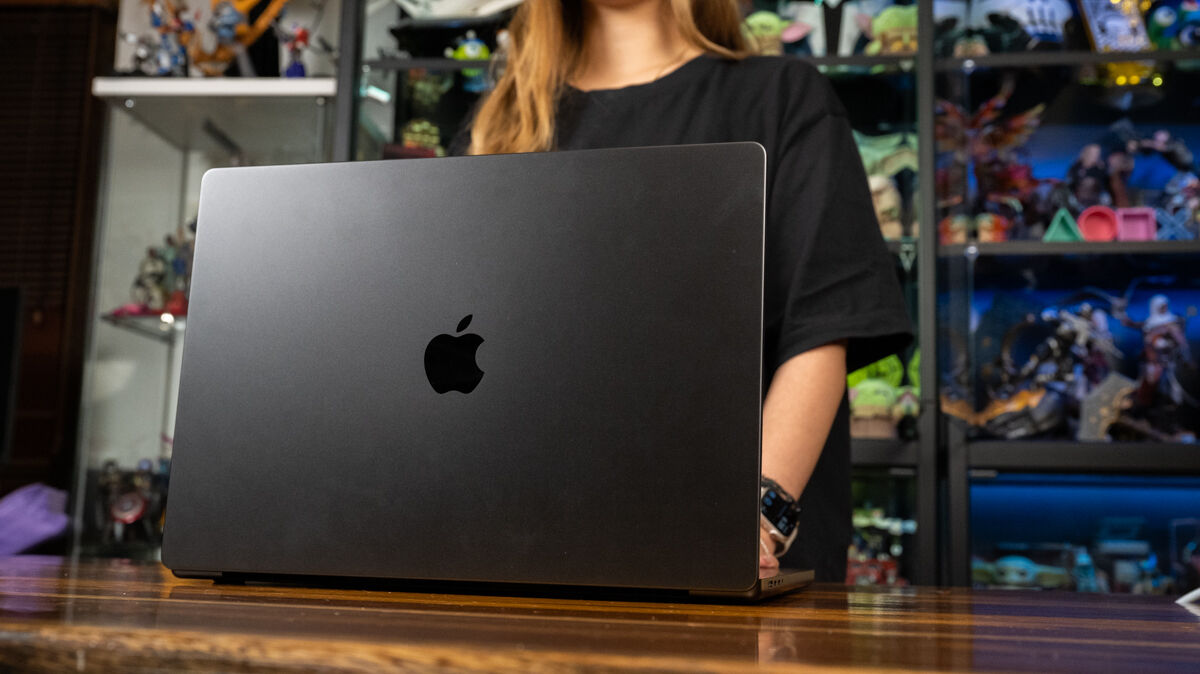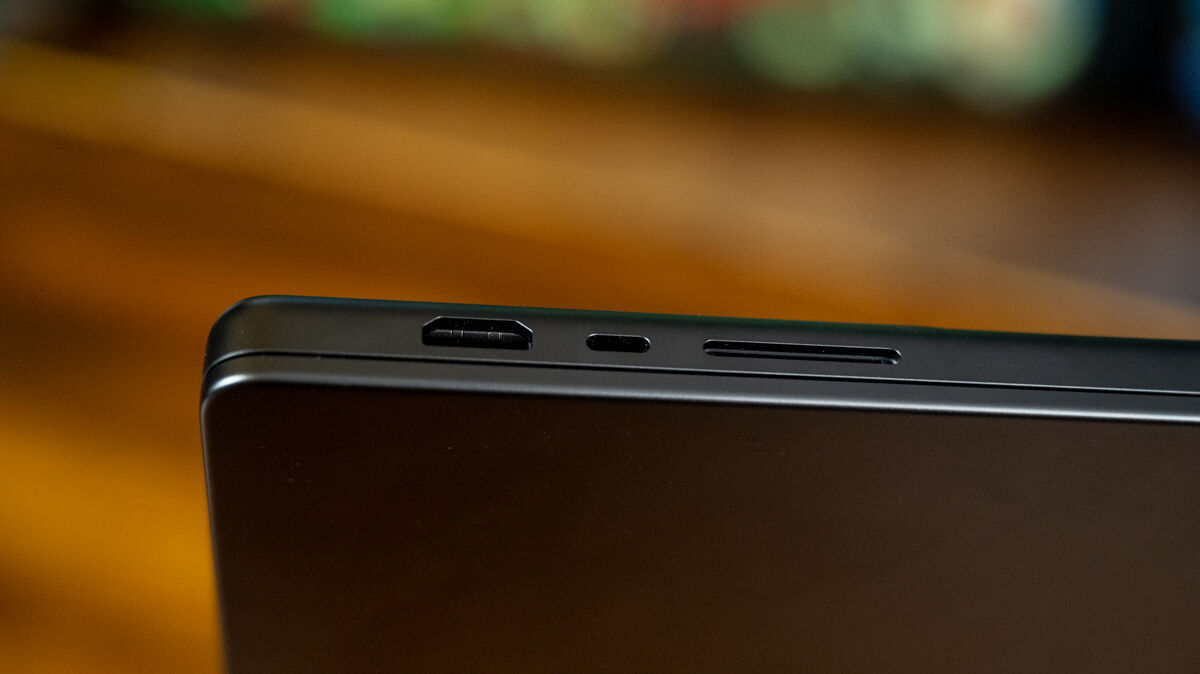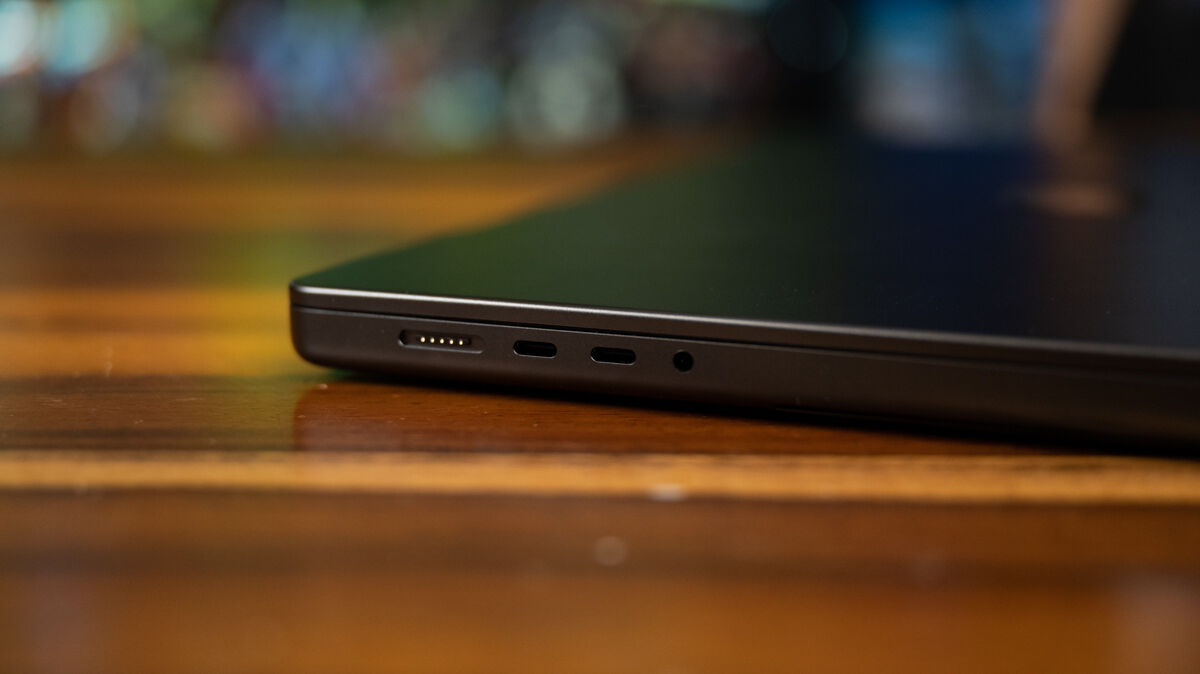It was an afternoon at the library, with around two hours to burn. After securing a seat, and opening the (relatively) new MacBook Pro 16 M3 Max (MBP) 16-inch, imagine the surprise of seeing that it only had 18 per cent of power left. Someone forgot to charge it the night before, and that’s the downside of using a machine that can last over 15 hours of extended use – keeping the device charged up is no longer a priority since it can keep going for a pretty long time.
After five months of using Apple’s latest MBP powered by its latest M3 Max processor, and five years after making the switch from PC to Mac from a lifetime of Windows use, there is absolutely nothing to miss about the slow, power-hungry, bulky monstrosities that have come to define the competition. On the other hand, MacBooks are some of the most convenient, easy-to-use, and now, portable machines available to the everyday user, with the powerful MBP 16 offering everything you can ever need for being on the go.

Even at that low rate of battery life left, this MBP 16 chugged on staunchly, connecting to the Wi-Fi and performing as expected for the next 100-plus minutes for web surfing, and partially typing out this review. That’s close to two solid hours of work performance, and few, if even any, laptops can provide something so amazing with what would have been a heart-stopping 18 per cent of juice left.
Since the tech giant debuted its own Apple silicon M chip, each iteration has outperformed the previous and the current M3 is no different. For those who remain unconvinced with performance and prefer statistics, Apple M3 chips has transitioned to the 3nm fabrication process, over the 5nm on the M2 family of chips, which is represented by the jump in transistor count, to 25 billion now compared to 20 billion before. That’s a whopping 25 per cent increase in hardware performance and it was well represented our benchmarks when we tested it during launch.


So convinced about the new chips, Apple has launched three versions – the M3, M3 Pro, and M3 Max. For those looking at better performance, the M3 Pro and M3 Max machines are the way to go and the three chips are available for the MacBook Pro 14 models. For the larger MacBook Pro 16, you can opt for either the M3 Pro or M3 Max versions. There’s a price point for every user and choices start from the preconfigured 8-core CPU, 10-core GPU with 8GB of Unified memory base models of the M3 powered MBP 14, and 12-core CPU, 18-core GPU with 18GB of Unified Memory of the M3 Pro powered MBP 16. The preconfigured M3 Max MBP 14 peaks with the 14-core CPU, 30-core GPU with 36GB of Unified Memory, while the M3 Max MBP 16 offers up to 16-core CPU, 40-core GPU with 48GB of Unified Memory, which is this review unit. Of course, you can choose to upgrade things further at a price.
So what do all these numbers represent? Well, benchmarks only tell one part of the story, and the only way to present performance data is contextual and lucky for us, we have three machines running on M3, to give us a sense of what is happening under the hood. Using Adobe Premiere Pro, we converted a fully fleshed-out 5-minute project consisting of 4K footage, B-rolls and animations, from our “Spider-Man 2 CE Unboxing”, and exported it to MP4.

The result? The iMac on M3 took 6 minutes and 15 seconds to do the job, while the MBP 14 took a slightly shorter 5 minutes and 23 seconds. On this bad boy, it took just 2 minutes and 39 seconds, which is more than half the time on the iMac, and half that on the MBP 14.
This performance does come at a price, and at S$5,896.20, the top-end MBP 16 does command a certain premium but it’s a workhorse that will continue to deliver, much like how the MBP 16 M1 still continues to serve faithfully. Visually, the only thing differentiating this iteration is the new Space Black colour option that just adds new layers of appreciation to the already iconic silver and grey options from previous Mac laptops. At first glance, the black is more a dark grey, especially when light bounces off the aluminium frame, but with the processing capabilities coursing through this elegantly designed and coloured device, it’s in a state of beauty of its own, separate from the plastic black chassis that dominate most other brands of laptops.
Once opened, the 16.2-inch Liquid Retina XDR display around the 35.57cm by 24.81cm by 1.68cm machine easily takes prominence, offering 4K (3,456 x 2,234) native resolution at 254 pixels per inch that delivers rich, crisp and beautiful colours. From streaming movies and TV shows via the usual services, or playing videos games via Steam or Epic Games Store, the display tackles video content of every type with ease, with as much ease as connecting your AirPods. For the uninitiated, all your Apple devices will instantly recognise your AirPods when it’s connected to one device with your Apple ID, and you can easily toggle it to jump from iPhone to iPad to MacBook. Sadly, you do have to deal with the centre-set notch at the top of the display that houses the camera, as it prevents appreciation of full-screen content.

For gamers out there holding back until Apple starts to get serious about having high quality, performing titles on the platform, there is unfortunately very little in terms of anything new to add. While Apple silicon is certainly capable of running the latest AAA titles, Apple has opted to bring top games on a title by title basis, so while you’ll still be faced with incompatible warnings on Steam and Epic Game Store on games that cannot run on Mac, you can play select titles including Death Stranding Director’s Cut and Resident Evil Village. During Apple CEO Tim Cook’s recent visit to Singapore, we did get a chance to ask him about the current situation and while he did say it was a priority, he did not go into details.
Portability with the device is also not an issue once you know about the ecosystem. The 2.16kg M3 Max models (2.14kg for the M3 Pro version) comes with a SDXC card slot, HDMI port and Thunderbolt 4 (USB-C) on the right edge, and MagSafe 3, 2 x Thunderbolt 4 (USB-C) and 3.5mm headphone jack on the left. You’ll still need an adaptor if you want to connect to a Ethernet cable, or need to plug in more USB type devices, but the machine is both for use in and out of the home.
The M3 Max model supports up to four external displays – with three external displays at 6K resolution at 60Hz over Thunderbolt, and the last one with up to 4K resolution at 144Hz across HDMI.
It can do up to three external displays, with two external displays with 6K resolution at 60Hz over Thunderbolt, and either the last one at 8K resolution at 60Hz or 4K resolution at 240Hz over HDMI. That’s a lot of display options and ostensibly, such a set-up would cater for the use of more hubs as needed. On the go, the device offers 22 of content watching across Apple TV and while we didn’t put it to the test, the machine easily surpassed the 15 hours of wireless web use, as we were listening to Spotify and doing word processing on the move.
The unit comes packed with a 140W USB‑C power adapter capable of fast charging, as we as a USB‑C to MagSafe 3 cable for charging. While we love the magnetic cable, there have been instances when the cable connects, but doesn’t charge. It takes a bit of jostling and awareness to see if the tiny orange light shows up, so we prefer to use this at home, and bring out a 100W USB-C cable for outdoor use as a physical connection works every time.
Given its heft and price, the MBP 16 isn’t for everyone. Students looking for performance and power can opt for the M3 MacBook Air models, and should they want something more, there’s the MBP 14 M3 or M3 Pro that is more portable and affordable. The MBP 16 is the best-in-class device for professionals who need the power, real estate and performance at any time, and don’t mind bringing it around everywhere.
GEEK REVIEW SCORE
Summary
The M3 Max MacBook 16 packs everything that Apple has to offer in a package that, aside from gaming, pretty much outperforms the competition in aesthetics and performance. It might come at a premium, but offers greater peace of mind and capabilities that lasts longer.
Overall
8.9/10-
Aesthetics - 9/10
9/10
-
Build Quality - 9/10
9/10
-
Performance - 9/10
9/10
-
Value - 8.5/10
8.5/10
-
Geek Satisfaction - 9/10
9/10














